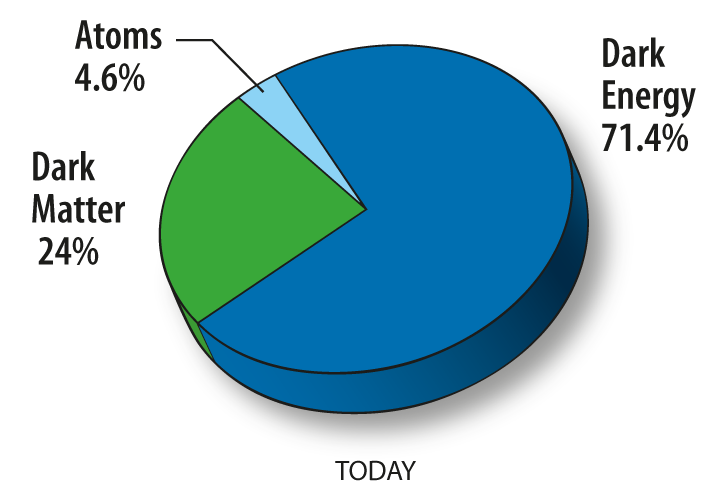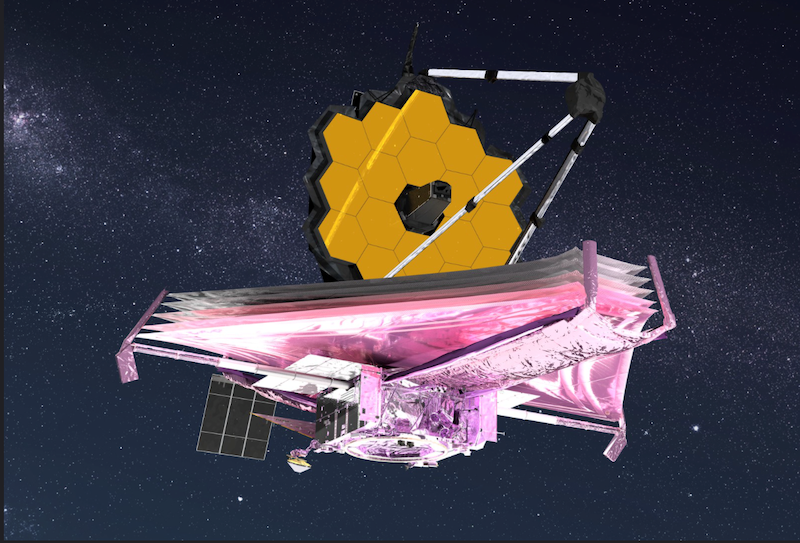Galaxies? Or the 1st dark stars glimpsed in the depths of space?
Are these the 1st dark stars?
Astrophysicists at the University of Texas at Austin said on July 14, 2023, that they’ve now identified three bright objects that might be “dark stars.” Wait. Stars shine, don’t they? It’s the fact of their shining – via fusion reactions in their interiors – that differentiates stars from planets. These new objects have existed up to now only in theory. And they do, indeed, shine. In fact, they’re said to be much bigger and brighter than our sun. But they don’t shine as stars do. Instead, if this new study is correct – if these truly are dark stars – then these three objects are made of the mysterious substance known as dark matter. And they’re powered by collisions between dark matter particles. The scientists said:
If confirmed, dark stars could reveal the nature of dark matter, one of the deepest unsolved problems in all of physics.
The scientists published the research in the peer-reviewed Proceedings of the National Academy of Sciences.
Dark matter stars?!
In modern cosmology, dark matter makes up about 25% of the universe. And roughly 70% of the universe is dark energy. Ordinary matter – like our sun and Earth and all that we know – makes up only 5% of the universe, according to the scientists’ theories.
Dark matter has been elusive. Scientists believe it exists, but don’t know what it is. But dark matter stars? That’s a new idea. Katherine Freese, director of the Weinberg Institute for Theoretical Physics at UT Austin, is lead author on the new study. She commented:
Discovering a new type of star is pretty interesting all by itself, but discovering it’s dark matter that’s powering this … that would be huge.

Meet the dark star candidates
The three candidate dark stars are JADES-GS-z11-0, JADES-GS-z12-0 and JADES-GS-z13-0. Astronomers participating in the James Webb Space Telescope Advanced Deep Extragalactic Survey (JADES) spotted them in December 2022. They thought, originally, these objects were galaxies, or collections of ordinary stars, not unlike our own Milky Way.
And they were very far away, placing them in the extremely early universe. The scientists’ statement said:
The JADES team confirmed the objects were observed at times ranging from about 320 million to 400 million years after the Big Bang, making them some of the earliest objects ever seen.
Freese said:
When we look at the James Webb data, there are two competing possibilities for these objects. One is that they are galaxies containing millions of ordinary, population-III stars.
The other is that they are dark stars. And believe it or not, one dark star has enough light to compete with an entire galaxy of stars.
Dark stars would be huge!
Dark stars could theoretically grow to be several million times the mass of our sun, these scientists said, and up to 10 billion times as bright as the sun. But do they exist?
Up to now, the idea for dark stars existed only in theory. The scientists’ statement said:
[It] originated in a series of conversations between Freese and Doug Spolyar, at the time a graduate student at the University of California, Santa Cruz. They wondered: What does dark matter do to the first stars to form in the universe?
Then they reached out to Paolo Gondolo, an astrophysicist at the University of Utah, who joined the team. After several years of development, they published their first paper on this theory in the journal Physical Review Letters in 2008.
And now, it seems, dark stars might in fact exist.
What is dark matter?
The UT Austin scientists’ statement said:
Scientists believe [dark matter] consists of a new type of elementary particle. And the hunt to detect such particles is on. Among the leading candidates are Weakly Interacting Massive Particles. When they collide, these particles annihilate themselves, depositing heat into collapsing clouds of hydrogen and converting them into brightly shining dark stars.
The identification of supermassive dark stars would open up the possibility of learning about the dark matter based on their observed properties.
The scientists plan follow-up observations with the Webb telescope.

Bottom line: Scientists say they’ve found the 1st dark stars – bigger and brighter than our sun – powered by dark matter particles that collide and annihilate themselves.











